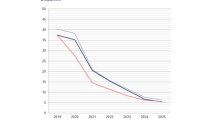 According to Euroconsult’s new research report on high-throughput satellites (HTS), 33 HTS systems will be launched between 2014 and 2016, a record high compared to the total 31 HTS systems that were launched over the last decade. The growing popularity of HTS systems will bring the total cumulative investment to over $12 billion.
According to Euroconsult’s new research report on high-throughput satellites (HTS), 33 HTS systems will be launched between 2014 and 2016, a record high compared to the total 31 HTS systems that were launched over the last decade. The growing popularity of HTS systems will bring the total cumulative investment to over $12 billion.
Despite the fact that HTS systems have become a global trend, satellite operators have employed a variety of system architectures, in terms of size, coverage, frequency band, platform access and payload flexibility.
“HTS systems will not be a ‘one-size- fits-all’ solution but are designed to the meet the specific needs of the targeted vertical market,” says Nathan de Ruiter, Senior Consultant at Euroconsult.
As a result of the large investments made by satellite operators, global HTS capacity supply is projected to nearly triple over the next three years to reach 1,400Gbps in 2016. However, HTS capacity available to a single end user in a given vertical market will not increase to the same extent as the available beam capacity differs between HTS systems.
The multiplication of HTS systems over the coming years will unlock growth opportunities in all major market verticals with global demand for HTS capacity expected to grow from around 85Gbps in 2013 to nearly 980Gbps in 2022, a CAGR of more than 30% over the period.
The following trends have been found for major vertical markets: consumer broadband will remain the largest vertical market representing nearly 60% of total HTS capacity usage in 2022. Cellular backhaul and trunking, and civil government and enterprise networks are growing at a similar pace of 35% per annum over 2013-2022, with demand driven by emerging regions. HTS demand for video services is expected to grow to 46Gbps in 2022, with the majority of traffic carried in North America and Europe. HTS usage in commercial aviation, commercial maritime and milsatcom should see a gradual take-up starting in 2014 after the launch of HTS systems designed to serve these markets.
“The need for HTS capacity is undeniably growing in a world that is more and more connected and increasingly data thirsty,” says de Ruiter.
As a result, total revenues from HTS capacity usage are forecasted to grow to approximately USD 5.6 billion in 2022, generating over USD33 billion in aggregate revenue between 2013 and 2022.












Add Comment